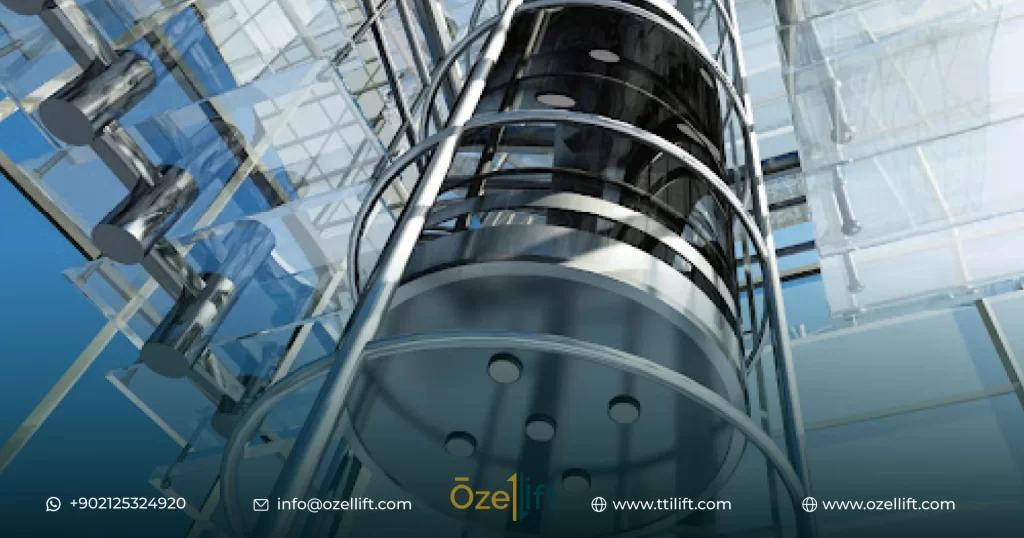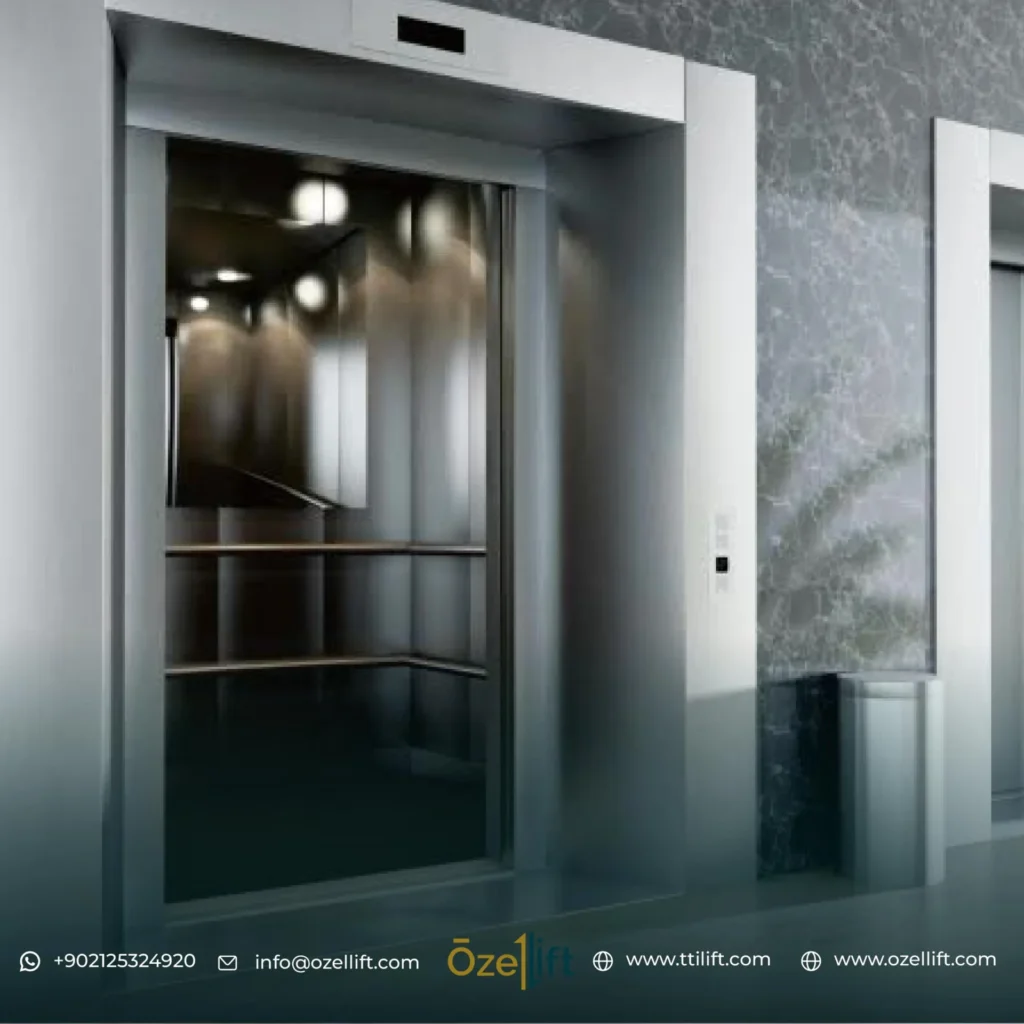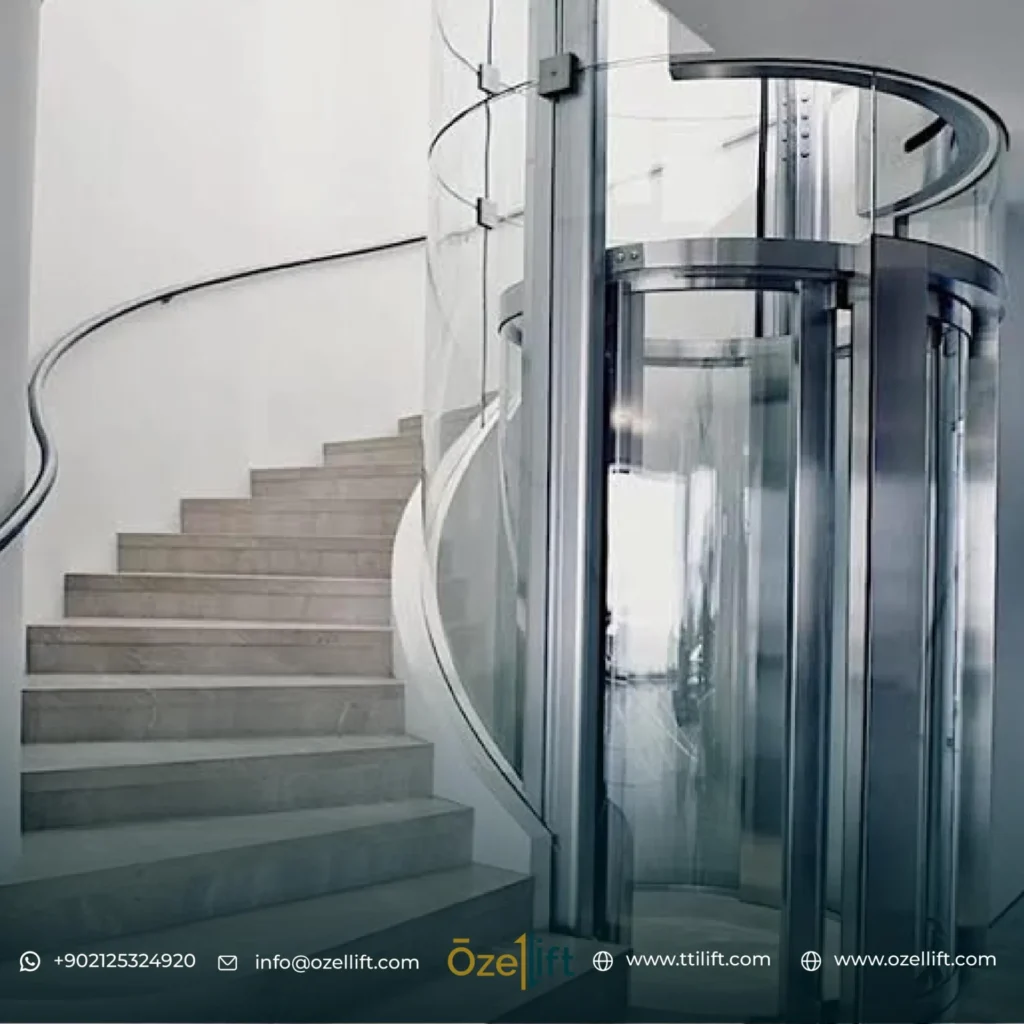Electric Traction Elevator Systems: Powering the Ascents of Today’s Cities, Electric Traction Elevator Systems have revolutionized vertical transportation, using an ingenious rope-and-pulley design driven by electric motors.
Electric traction elevator systems have become the preferred choice for vertical transportation in buildings due to their efficiency, reliability, and safety. These systems utilize electric motors and pulleys to move elevator cars, eliminating the need for hydraulic systems. Understanding how electric traction elevator systems work, their costs, and their advantages and disadvantages compared to hydraulic systems is crucial for architects, engineers, and building owners. In this comprehensive guide, we will explore the anatomy of electric traction elevator systems, discuss their costs, compare them to hydraulic systems, and examine the pros and cons of geared traction elevators. Whether you are involved in the construction industry or simply curious about elevator technology, this guide will provide you with all the information you need.
Understanding the basics: What is an electric traction elevator system?
An electric traction elevator system is a type of vertical transportation system commonly used in buildings today. It consists of several key components that work together to facilitate smooth and efficient movement between floors.
At the heart of the system is the electric motor, which powers the pulleys or sheaves that are connected to the elevator car through a system of cables or ropes. When the motor is activated, it causes the cables to move, either pulling the car up or letting it down, depending on the direction selected by the passengers.
Electric traction elevator systems offer several advantages over hydraulic systems. They are more energy-efficient, as the motors only operate when the elevator is in use. They also have a higher weight capacity, allowing for the transportation of larger loads. Additionally, electric traction systems are known for their smooth and quiet operation, contributing to a more comfortable ride experience.
Understanding the basics of electric traction elevator systems is essential for professionals in the construction industry, as it enables them to design and implement efficient and reliable vertical transportation solutions. In the next section, we will delve deeper into the various components of an electric traction elevator system and how they interact to ensure safe and seamless transport between floors. Stay tuned!
Key components of an electric traction elevator system
To fully comprehend the functioning of an electric traction elevator system, it is important to have a clear understanding of its key components. Each component plays a crucial role in ensuring the safe and efficient movement of the elevator. Let’s dive deeper into these components:
a. Electric motor: The heart of the system, the electric motor provides the power needed to operate the elevator. It drives the pulleys or sheaves, which in turn move the elevator car by means of cables or ropes.
b. Control system: This component is responsible for managing the elevator’s movements and behavior. It regulates floor selection, door operations, speed, and safety features. Modern control systems often incorporate advanced technology, such as microprocessors and sensors, to enhance performance and ensure passenger safety.
c. Suspension system: Comprising the cables or ropes and associated hardware, the suspension system supports the elevator car and provides the primary means of vertical movement.
d. Safety systems: To ensure passenger safety, electric traction elevator systems are equipped with various safety features, including overspeed governors, door interlocks, emergency brakes, and emergency communication devices.
In the upcoming section, we will explore each of these components in detail, discussing their functionalities, types, and factors to consider when selecting them for different building types. Stay tuned to gain a comprehensive understanding of electric traction elevator systems!
Know more about
passenger elevator types
Different types of electric traction elevator systems and their diagrams.
Now that we have a clear understanding of the key components of electric traction elevator systems, let’s delve into the different types of these systems and their corresponding diagrams.
1. Geared Traction System: This type of system utilizes a gearbox to control the motor’s speed and torque, allowing for efficient operation and smooth acceleration. The diagram for a geared traction system shows the gear mechanism and how it interacts with the motor and the drive sheave.
2. Gearless Traction System: In this type of system, the motor is directly connected to the drive sheave, eliminating the need for a gearbox. The gearless traction system diagram illustrates the direct connection between the motor and the drive sheave, showcasing its simplicity and compact design.
3. Machine Room-Less (MRL) Traction System: MRL systems are becoming increasingly popular due to their space-saving design. These systems incorporate both geared and gearless traction technology, but with a smaller footprint. The MRL traction system diagram showcases the compactness and efficiency of this type of system.
Contact ozellift now to Know more about Different types of electric traction elevator systems
Factors to consider when choosing an electric traction elevator system for your building
When it comes to selecting an electric traction elevator system for your building, there are several key factors that you need to take into consideration. These factors will help you make an informed decision that aligns with your specific needs and requirements.
1. Building Height and Traffic: The height of your building and the expected traffic volume will dictate the type and capacity of elevator system you need. It’s important to choose a system that can efficiently handle the projected number of passengers and navigate the vertical distance in a timely manner.
2. Energy Efficiency: Electric traction elevator systems come with different energy efficiency ratings. Opting for a system that is designed to minimize energy consumption can have a significant impact on your building’s carbon footprint and operational costs.
3. Safety Features: Elevator safety is of utmost importance. Look for systems that come equipped with advanced safety features such as emergency communication systems, backup power supply, and monitoring devices.
Maintenance and Service:
Consider the availability of service providers and the cost of maintenance when choosing the right system for your building.
By carefully assessing these factors, you can confidently select the most suitable electric traction elevator system for your building. In the next section, we will explore the costs associated with different types of electric traction elevator systems, helping you develop a better understanding of the financial considerations involved.
Know more about
best elevator company to work for
advantages and disadvantages of traction elevator
Evaluating the costs associated with installing and maintaining an electric traction elevator system
Understanding the costs involved in installing and maintaining an electric traction elevator system is crucial in making a well-informed decision. Along with the initial installation expense, considerations such as ongoing maintenance, repairs, and operational costs should be taken into account.
Installation costs can vary depending on the type and capacity of the elevator system you choose, as well as the complexity of the installation process. It is advisable to consult with professionals who can provide accurate cost estimates based on your specific building requirements.
Additionally, factor in the long-term maintenance costs. Regular servicing and inspections by qualified technicians are essential for the smooth operation and longevity of your elevator system. Budget for routine maintenance and consider service contracts offered by manufacturers or third-party service providers.
Another cost consideration is repairs. While modern electric traction elevator systems are designed to be reliable, unforeseen breakdowns can occur. It’s wise to set aside funds for unexpected repair expenses, including the replacement of components or hardware.
Operational costs, such as energy consumption and power requirements, also contribute to the overall expenses. Look for energy-efficient systems that can help reduce your building’s energy consumption and lower operational costs in the long run.
By carefully evaluating the costs associated with installing, maintaining, and operating an electric traction elevator system, you can make an informed decision that not only meets your building’s needs but also fits within your budget. In the next section, we will delve into the different types of electric traction elevator systems available in the market, providing you with a comprehensive understanding of their features and benefits. Stay tuned for more valuable insights!
Benefits and drawbacks of electric traction elevator systems
Now that we have discussed the costs involved in electric traction elevator systems, let’s delve into the benefits and drawbacks. Understanding these factors will help you determine if this type of system is the right fit for your building.
One of the key advantages of electric traction elevator systems is their smooth and quiet operation. Unlike hydraulic elevators, which rely on hydraulic fluid and can produce noise and vibrations, electric traction elevators use a motor and pulley system to move the cab. This results in a quieter and more comfortable riding experience for passengers.
Another benefit is the ability to reach greater heights. Electric traction elevator systems have the capacity to travel to taller heights compared to hydraulic elevators. This makes them a suitable choice for high-rise buildings and skyscrapers.
Additionally, electric traction elevator systems offer a higher level of energy efficiency. They consume less power during operation, which can lead to significant cost savings in the long run.
However, it’s important to consider the potential drawbacks as well. Electric traction elevator systems tend to have higher upfront installation costs compared to hydraulic elevators. The complex machinery and sophisticated technology involved in these systems contribute to the higher price tag.
Furthermore, electric traction elevator systems require a separate machine room to house the motor and other components. This can result in the loss of usable space within a building, which may be a drawback for some property owners.
We will explore the different types of electric traction elevator systems available in the market, including geared and gearless systems. We will discuss their specific features and advantages to help you make an informed decision. Stay tuned for more valuable insights.
Common maintenance and troubleshooting issues with electric traction elevator systems
In addition to understanding the benefits and drawbacks of electric traction elevator systems, it is important to be aware of common maintenance and troubleshooting issues that may arise. By being proactive in addressing these issues, you can ensure that your elevator system remains in optimal condition and operates smoothly.
One common maintenance issue is the wear and tear of elevator components over time. Regular inspections and maintenance checks are essential to identify any areas that need repair or replacement. Components such as cables, pulleys, and motors should be inspected for signs of damage or excessive wear.
Another potential issue is the occurrence of mechanical breakdowns. This can be caused by a variety of factors, including motor malfunction or issues with the pulley system. Regular servicing and preventative maintenance can help minimize the risk of breakdowns and ensure that your elevator system continues to operate reliably.
Furthermore, electrical problems can also occur in electric traction elevator systems. Issues such as faulty wiring or power surges can disrupt the operation of the elevator. Regular electrical inspections and the use of surge protection devices can help prevent these problems.
By being aware of these common maintenance and troubleshooting issues, you can take proactive steps to address them and ensure the smooth and reliable operation of your electric traction elevator system. In the next section, we will discuss the importance of hiring a qualified and experienced elevator maintenance provider to help you with these maintenance and troubleshooting tasks.
Conclusion: Choosing the right electric traction elevator system for your building
Now that we have covered the various aspects of electric traction elevator systems, from their diagrams to maintenance and troubleshooting, it is time to discuss the importance of choosing the right system for your building.
When selecting an electric traction elevator system, it is vital to consider important factors such as the building’s size, usage patterns, and traffic flow. You should also take into account the safety features, energy efficiency, and aesthetic appeal of the elevator system.
Additionally, it is crucial to work with a reputable elevator manufacturer or supplier who can provide you with expert guidance and support throughout the selection and installation process. A trusted professional can help you determine the most suitable type of system for your building and assist with any customization requirements.
By carefully considering these factors and partnering with a reliable provider, you can ensure that you make an informed decision and install an electric traction elevator system that meets the unique needs of your building – Contact ozellift now.
What is an electric traction elevator?
An electric traction elevator is an elevator that goes up and down using an electric motor and ropes or belts.
What are the two types of traction elevator?
There are two types: one with gears (Geared Traction) and one without gears (Gearless Traction).
What is the mechanism of a traction elevator?
A traction elevator works when an electric motor pulls or pushes the elevator using ropes or belts.
How does an electric elevator work?
An electric elevator works by using a motor to move the elevator up and down. Ropes or belts are attached to the elevator, and the motor pulls or pushes them to make the elevator move.



